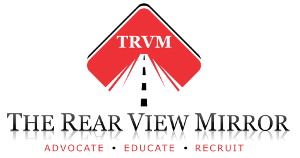Finding new talent, training them and retaining them is a problem in almost every industry in the majority of countries across the world. The transportation industry is certainly near the top of the list of fields that are suffering from a chronic shortage. For as long as I can remember the industry has spoken about a major driver shortage. Whether the shortage was real over the last several decades can and has been debated by many as rates were low and driver pay had not kept up with inflation. While not every truck had a driver, a vacant seat does not mean a shortage exists. What truly indicates whether a shortage exists is if freight goes undelivered and services not fulfilled. With that in mind, the last 3 years have shown us that a shortage is now truly here. Rates skyrocketed, driver pay increased, and shippers had to bid for services at unprecedented levels if they wanted to get their products delivered. While we may be in the beginning of an economic slow down, and demand has been reduced, subsequently pulling rates back, we are still above pre pandemic levels and shortages still exist. Take with this the average age of a driving being over 50, and many past the age of 65, the shortage that is now here will not go away, and in fact is likely to get worse in the years ahead. Recent numbers issued by TruckingHR Canada for the period up to the end of September show that there are 26,900 vacancies, with over half of these jobs being posted for over 90 days. The over 90 day portion indicates this is not a seasonal peak or valley, but a long term position that is going unfilled. The unemployment rate for drivers in the industry for the 1st three quarters of 2022 was only 3.2%, well below the national average of 5% reported in December.
Recruiting new workers to our industry is crucial, and something we have struggled with for years. One of the hurdles has been funding, specifically when it comes to the driving occupation. As the occupation is not considered a skilled trade (which it should be, but that is a whole other article…) obtaining student loans or grants is almost impossible, leaving the roughly $10k fee that it costs to take the training required to obtain your class A or class 1 license out of reach for many. The good news is the government has seen the issues a shortage has created, and have reached out and been listening to industry in the last few years. The government brought together the views of many stakeholders through the National Supply Chain summit and taskforce. They have heard the industries viewpoints and have acted on several, with a large-scale program for funding training programs, both pre and post employment now in effect. Through Trucking HR Canada, the government has provided funding to expand the Career Expressway Program. The funding includes driver training grants for entry level training and wage incentives to help bring on new drivers. It also includes financial incentives for non-driving roles. Through the program, new and existing employees can obtain up $10k to cover the cost of their entry level training. These funds can be accessed by any Canadian citizen, permanent resident or persons granted refugee status & there is no age restriction. Do you have current employees who you would like to upskill to class 1/A license? If so, they will be eligible as well. Once a newly licensed driver has been onboarded, the employer is also eligible to receive up to $10k in wage incentives to help with the post license training, commonly referred to as mentor or finishing training. There is also funding up to $10k available for non-driving roles, in addition there is an additional $5k available for underrepresented groups such as women, indigenous, racialized communities, visible minorities, people with disabilities and newcomers to Canada with-in the last 5 years.
This funding is available now and can be accessed by employers by contacting Trucking Hr Canada. Their staff will guide you through the process. For more information on the program click on the following link. https://truckinghr.com/career-expressway-thrc/driver-training-grants/ Please ensure to reach out. As an industry we must utilize these funds and help bring in the workers that are needed to carry our industry to new heights going forward!

